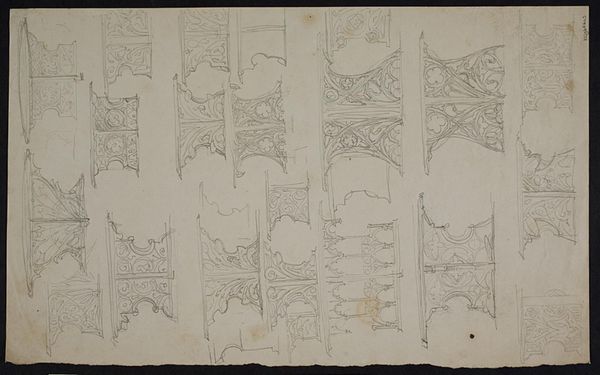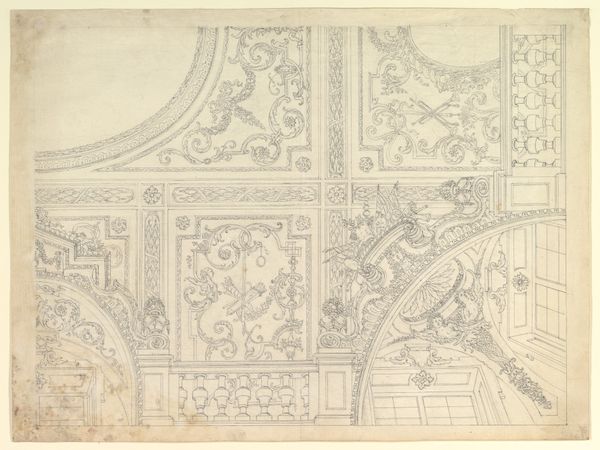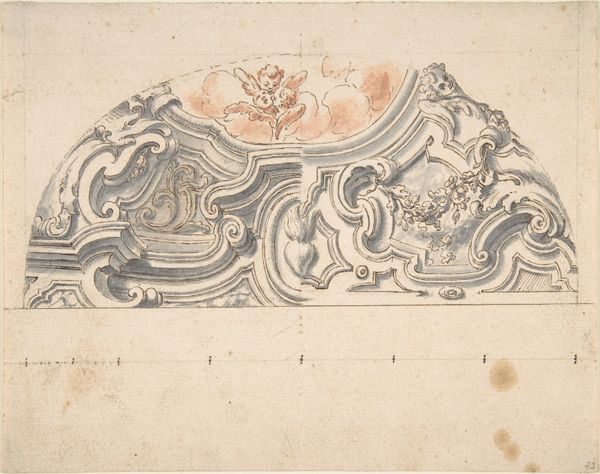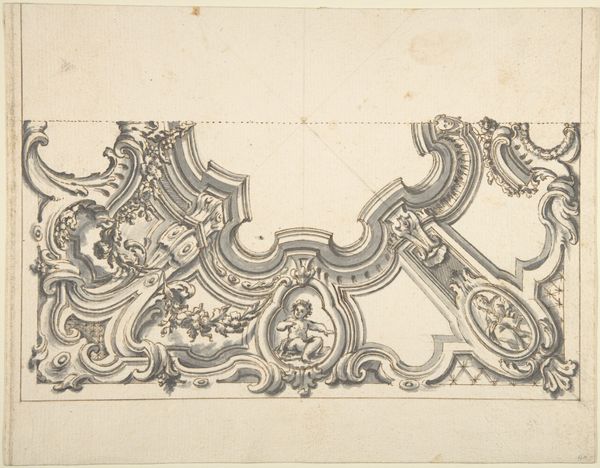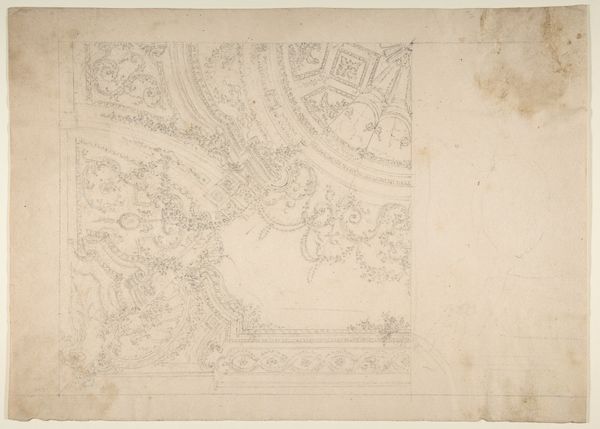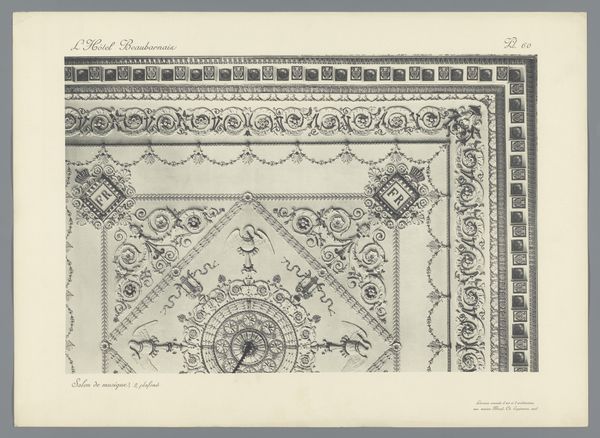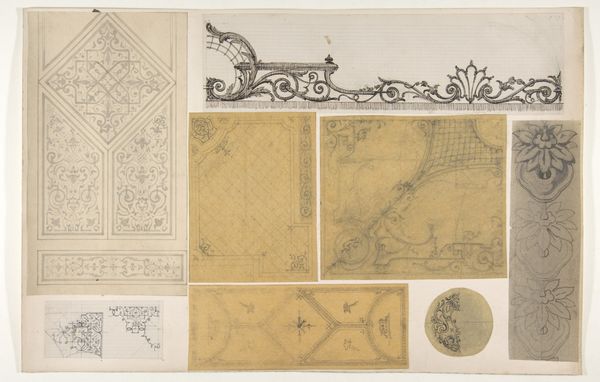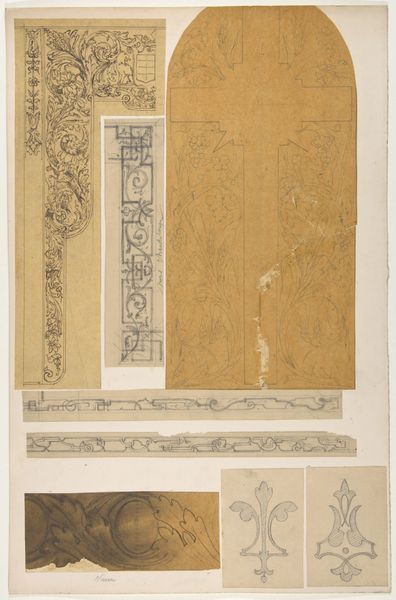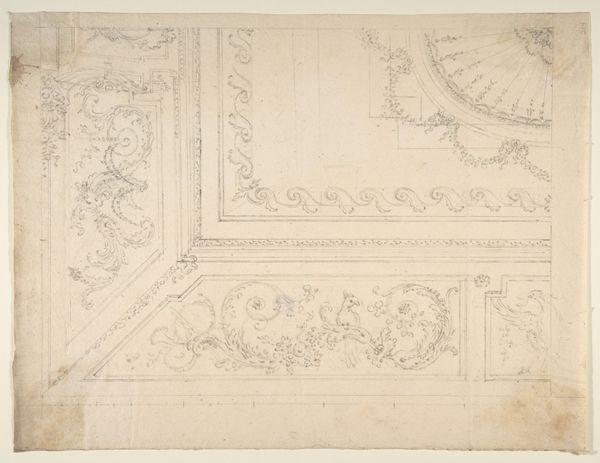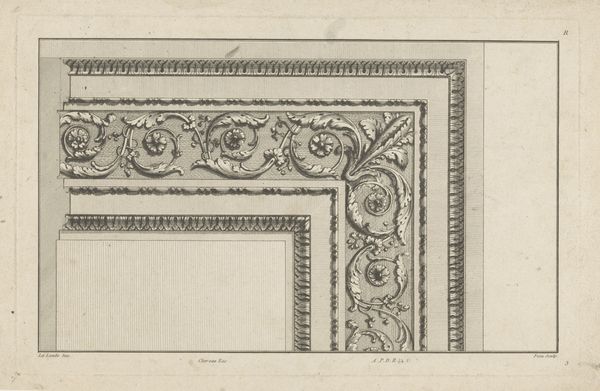
Ontwerp vestibule 1e Classe, mozaïek, Mr. P.C. Hooft 1874 - 1945
0:00
0:00
careladolphlioncachet
Rijksmuseum
drawing, etching, ink
#
drawing
#
art-nouveau
#
etching
#
etching
#
ink
#
linocut print
#
geometric
#
pen-ink sketch
Dimensions: height 609 mm, width 958 mm
Copyright: Rijks Museum: Open Domain
Carel Adolph Lion Cachet made this design for a mosaic vestibule in the late 19th or early 20th century. It's rendered on paper, but the intent was clearly to translate this into hard materials. Consider the process of mosaic production, which involves the careful arrangement of small pieces like glass, stone, or tile, to create a larger image or pattern. The inherent qualities of these materials – their colors, textures, and durability – would ultimately define the aesthetic experience of the vestibule. This design embodies the skilled traditions of mosaic work, drawing upon both craft and fine art aesthetics. It is also tied to wider social issues of labor, politics, and consumption. The creation of a mosaic vestibule would have required a team of skilled artisans, each contributing their expertise to the production process. By understanding the materials, making, and context of this design, we can appreciate its full meaning and challenge traditional distinctions between fine art and craft.
Comments
No comments
Be the first to comment and join the conversation on the ultimate creative platform.
